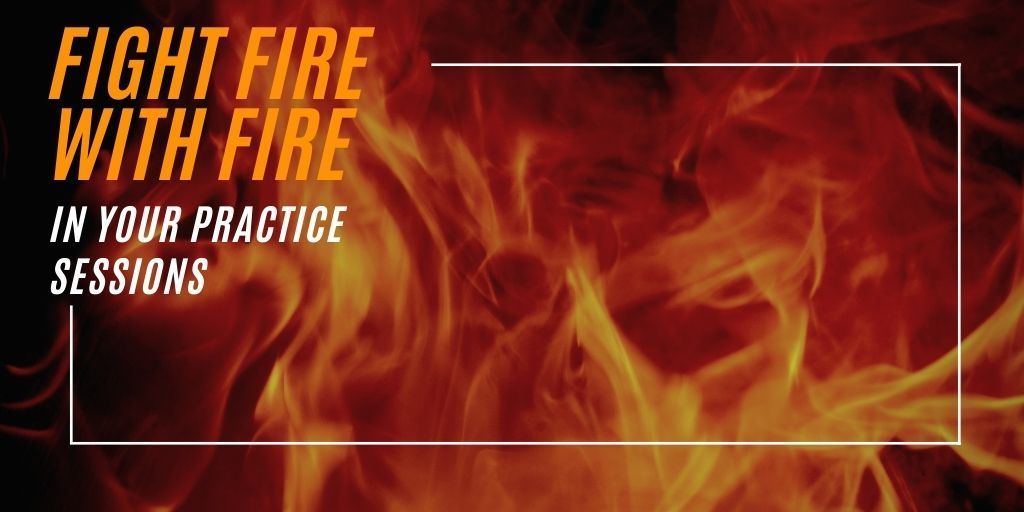
Golf can be a remarkably counterintuitive game. We're taught to perform the same technique repeatedly to gain proficiency as a ball striker. But what if going completely off the script and doing the complete opposite of what you usually do can make you a better player?
In this article, I will introduce you to a practice method that I think can add a lot of value to your sessions. It's not something that you have to do all the time, but adding small doses of it to your regiment here and there can provide many benefits, especially when you are struggling with controlling your ball flight.
How Opposites Can Fight Extremes
A couple of years ago, I was invited to play in the Goslings Invitational Tournament in Bermuda. Before the tournament began, we had a pro-am on Monday. I was paired with two athletes I had watched on TV for years, and another golfer who (as luck would have it) was a follower of the site.
Needless to say, I was a little more nervous than usual before the round. I felt a lot of pressure to play well that week because the guy who invited me (now a close friend) used one of his invites on the premise that I was supposed to be a pretty good player. Also, I had never played golf with any celebrity before, so that threw me for a little bit of a loop.
Unfortunately, after not having played in over a month, my swing was really out of whack. Typically, if I'm struggling, it will be with hooking the ball because my swing path is very in-to-out. For the first six holes, I was hitting duck hooks and completely dumbfounded. Luckily, my teammate, a former Cy-Young Winner, carried me in our match with 330-yard drives and birdies.
I decided to do the only thing I could think of with embarrassment mounting - try to hit a huge slice. So before each shot, I used a drill that a friend of mine had given me years ago. I pointed my feet towards the target and rehearsed an extremely exaggerated out-to-in swing path. Perhaps I looked foolish, but it worked like magic and saved the rest of the round (and week).
In reality, what the drill was doing was shifting my swing path. What felt like a huge "slice swing" was really moving my in-to-out swing back into what I would call "functional territory."
Understanding Your Tendencies
The most common complaint amongst golfers is that they want more consistency. But in reality, most players are remarkably consistent with how they deliver the golf club. This could be any of the following categories:
- Club path (out-to-in or in-to-out)
- Impact location (toe or heel bias)
- Turf Interaction (controlling the low point of the club)
- The loft of club at impact (adding loft or delofting)
For example - I draw the ball, typically deloft the club, have a shallow angle of attack with irons, and strike the heel when I'm struggling.
Over time, our tendencies can get extreme. Becoming a better golfer entails fighting those extremes and getting back to the aforementioned "functional territory." I've found that doing the exact opposite, or "fighting fire with fire," can help neutralize the problem.
The best place to start is knowing your tendencies. You can measure your impact location, work with a teaching professional, use a shot-tracking system, or even use a launch monitor to understand the inclinations in your swing.
How You Can Experiment While You Practice
Luckily, this practice method is pretty simple. The goal is to get you to do a little self-exploration and get outside of your comfort zone. Broadly speaking, I want you to do the exact opposite of what you seem to struggle with.
Here are a few examples:
- If you're striking it too close to the heel of the club, consciously try to hit the toe (measure with foot spray)
- Are you struggling with a nasty slice? Try to hit the biggest hook imaginable
- Is your ball flight typically too high? What can you do in your setup and golf swing to keep the ball lower?
- Do you hit your iron shots "fat?" Try consciously trying to strike the ground several inches in front of the ball during practice
While I can't account for all of your results, I think many of you will see some interesting things happen when you do this. Going back and forth between practicing extremes and then trying to hit the ball "normally" might reduce many of the problems you have in your swing.
Overall, the reason I like this kind of practice is that it helps build your skill. Too many golfers try to fit into some model swing and make their technique look a certain way. However, what's most important is your inherent skills as a ball-striker - not what it looks like.
We care about the protection of your data Read our Privacy Policy